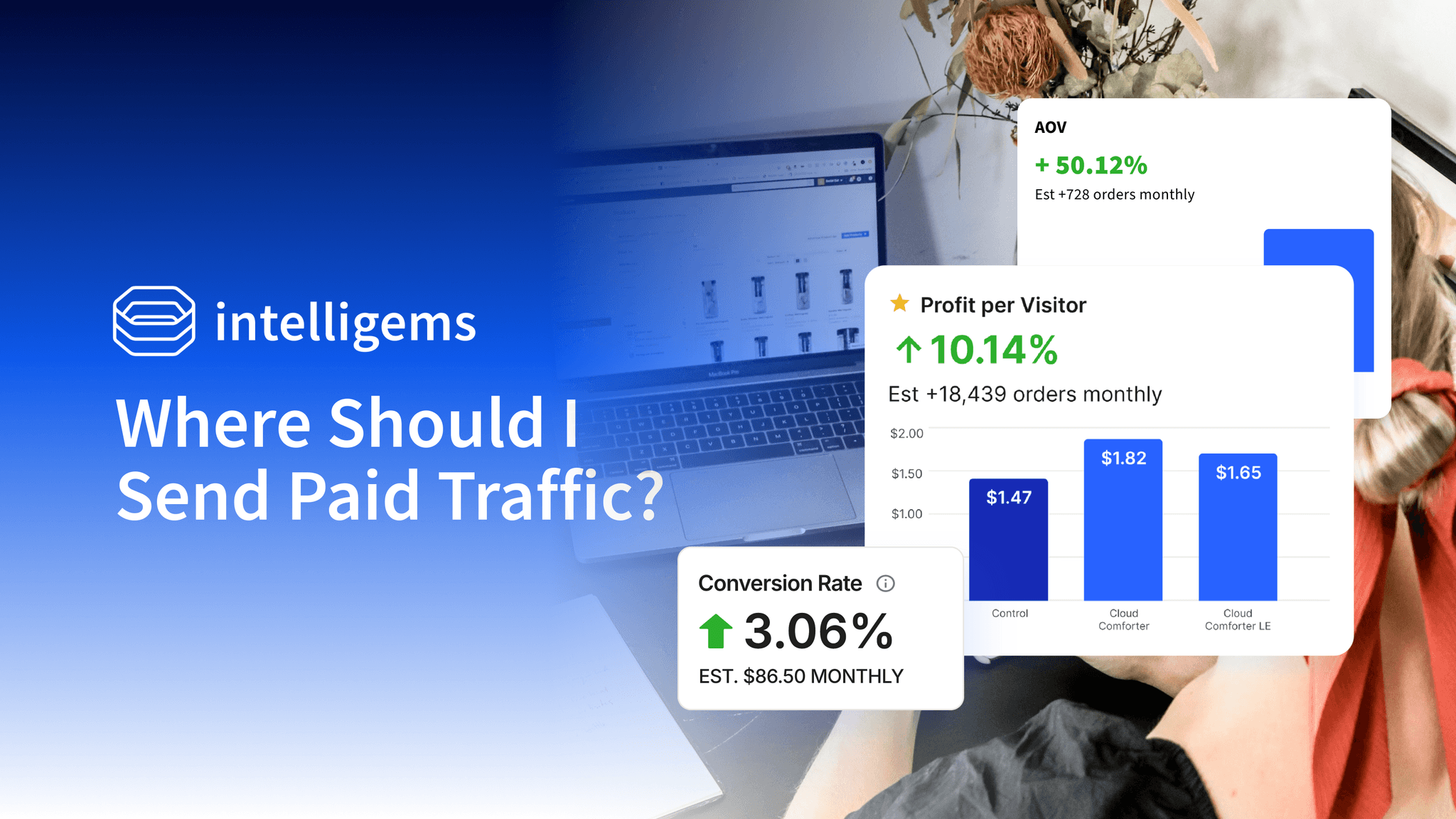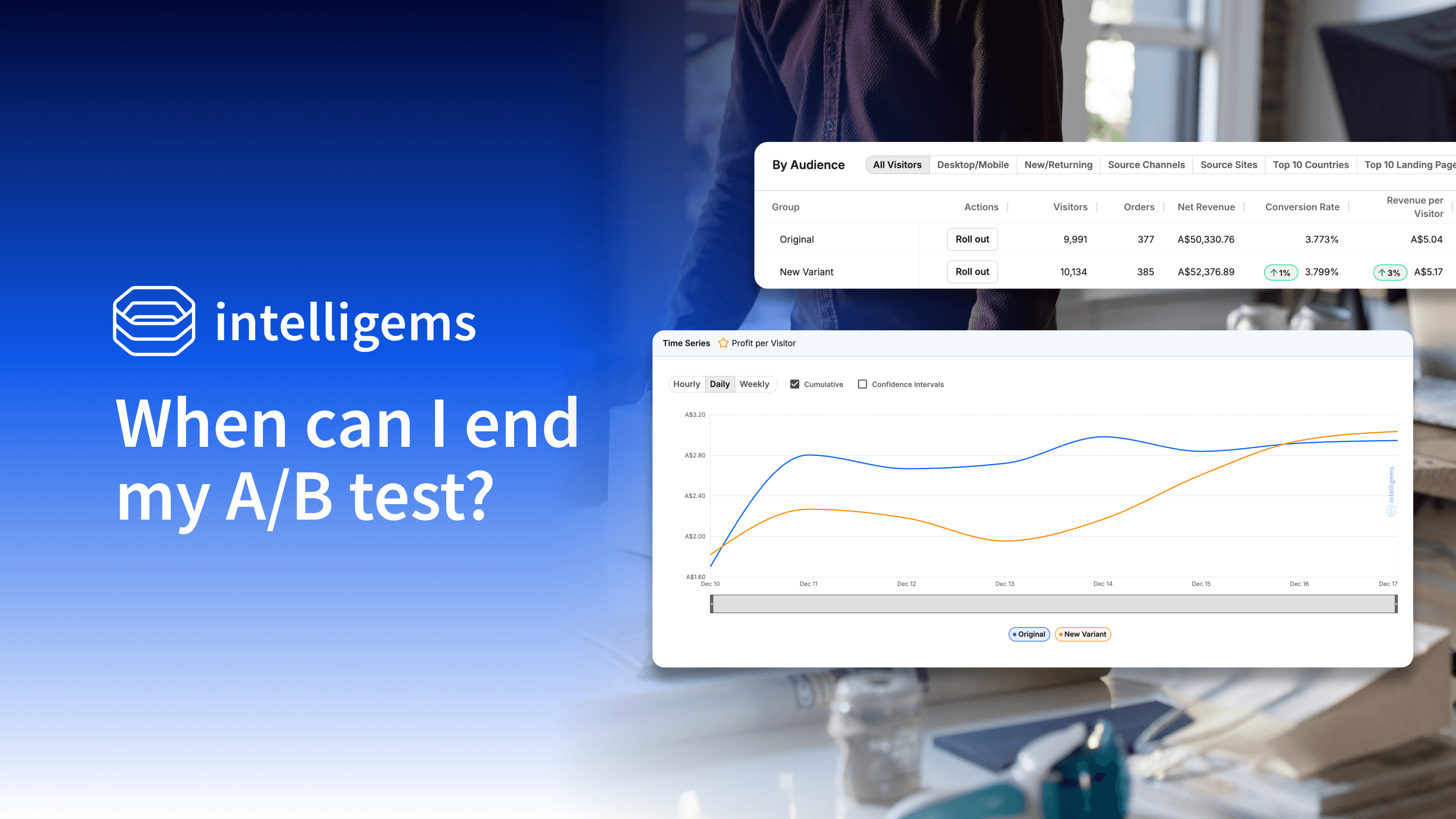Ecommerce Strategy
May 7, 2025
How to Design Your Ecommerce Product Offer: The Ultimate Guide for Higher Sales
How to Design Your Ecommerce Product Offer for Sales
Product offer design is one of the most overlooked parts of running an ecommerce store. Yet, it has a direct impact on how customers understand your value and what they choose to buy.
Many Shopify merchants focus on marketing or design, but the way a product is packaged, priced, and presented is just as critical. A product offer is not only about the item itself—it's how it's framed, what's included, and how the customer experiences it.
This guide explains the core elements of designing an effective ecommerce product offer.
Why does product offer design matter?
A well-structured product offer helps customers make faster and more confident decisions. When the value is clear, friction is reduced, and more visitors convert into buyers.
Confusing pricing, unnecessary features, and vague bundles create hesitation. Some stores rely on shallow discount strategies or cluttered upsells that dilute the overall message. These tactics often cause shoppers to abandon purchases or delay decisions.
Product offers aren't static. They respond to inventory levels, seasonality, customer behavior, and testing. Merchants who make small, quick and consistent adjustments often find better results than those who wait for large updates.
No-code tools allow teams to make these changes without relying on developers. This makes it easier to refine offers in real time based on what is or isn't working.
Steps to design your ecommerce product offer
Creating an ecommerce product offer involves several parts working together. Each part helps customers understand what they're buying and why it matters.
1. Define the core value proposition
The core value proposition explains what the product does and why it's useful. It connects the product's benefits to what the customer is looking for.
This could include the product's quality, how it works, or what makes it different from other options. This information is often placed near the product title or description.
For example, instead of just listing "100% cotton t-shirt," a better value proposition might be "Ultra-soft cotton t-shirt that stays comfortable all day."
2. Choose a pricing tactic that fits your goals
Pricing tactics help shape how customers think about value. Common approaches include:
Limited-time discounts: Creating urgency with special pricing that expires soon
Product bundles: Grouping related items at a slightly lower price than buying separately
Tiered pricing: Offering different versions of a product at different price points
These approaches can be tested using Intelligems to easily experiment with different prices and pricing strategies. This makes it easier to compare results across several pricing methods.
3. Incorporate trust signals and social proof
Trust signals help customers feel confident when deciding to buy. They show that other people have had good experiences with your products.
Trust signals like customer reviews can influence 93% of purchasing decisions on ecommerce websites. Here are just a few that can be used in your product offer:
Customer reviews with photos
Star ratings
Video testimonials
"As featured in" logos for press mentions
These elements influence shoppers who are unsure or comparing products. They also show that other customers have had a positive experience.
4. Showcase variations and easy customization
Products that come in different sizes, colors, or configurations benefit from clear variation options. These options help customers find what fits their preferences.
Dynamic product pages allow merchants to display these variations without slowing the site down. This reduces confusion during the buying process.
When designing your ecommerce product page, make sure customers can easily see:
Available sizes
Color options with accurate swatches
Configuration choices
Preview images that update when options change
5. Leverage urgency and scarcity
Urgency and scarcity are used to guide purchase timing. This can include showing real-time stock levels, countdown timers, or flash sales.
Strategic use of urgency mechanics can achieve conversion rate improvements of up to 332% for ecommerce products.
For example, showing "Only 3 left in stock" or "Sale ends in 24 hours" can help customers make decisions faster. These signals work best when they're honest and based on real limitations.
Pricing strategies that boost sales
Pricing strategies help shape how customers perceive value. These strategies can affect both how much people buy and how they view the brand.
Utilize tiered pricing or bulk discounts
Tiered pricing means offering the same product at different price levels. For example, a store might sell a single item for $20, a pack of three for $50, and a pack of five for $75. Each level gives the customer more value per item as the quantity increases.
Bulk discounts work in a similar way. When customers buy more of the same item, the price per unit goes down. This can increase average order value (AOV) by encouraging shoppers to purchase more at once.
Even small changes to these tiers—like adjusting the price or minimum quantity—can shift buying patterns.
Test anchored pricing for better perceived value
Anchored pricing involves showing a higher-priced option next to the main offer. For example, listing a $100 product next to a $60 version can make the $60 version appear more affordable.
Testing different anchor prices can be done using tools like Intelligems. This allows stores to see how changes in pricing order or presentation affect customer choices. Eye-tracking studies indicate that 67% of consumers focus first on product images, then price, followed by reviews when viewing ecommerce product pages.
Testing different anchor prices can be done using tools that support A/B testing. This allows stores to see how changes in pricing order or presentation affect customer choices.
Common mistakes to avoid
Understanding what not to do is just as important as understanding what works. These common mistakes often lower conversion rates and create friction during the buying process.
Obscuring the total cost or adding hidden fees
Unexpected charges at checkout often lead to cart abandonment. These can include handling fees, inflated shipping costs, or mandatory add-ons not mentioned earlier in the process.
Clear pricing from the start prevents confusion. Displaying all costs—including taxes, shipping, and any required fees—on the product page or early in the checkout flow helps customers make informed decisions.
Key takeaway: Transparency builds trust. When customers know the full price upfront, they're less likely to abandon their carts at checkout.
Overcomplicating the offer with too many options
Sure, please provide the paragraph you'd like me to update.
Simplified product options reduce decision fatigue. Presenting only the most relevant variations or limiting how many extras are shown at once can make the experience easier to navigate.
Key takeaway: Choice paralysis is real. Too many options can make customers less likely to buy anything at all.
Optimizing your product page design
Your ecommerce product page design directly impacts how well your offer performs. The layout, images, and information hierarchy all play important roles.
Clear, high-quality images
Product images are often the first thing customers notice. They need to be clear, professional, and show the product from multiple angles.
For ecommerce product pages, include:
Main product image with white/neutral background
Close-up shots of important details
Lifestyle images showing the product in use
Size reference photos
Zoom functionality lets customers examine products more closely, which is especially important for items where texture or detail matters.
Strategic placement of key elements
The organization of your product page affects how customers process information. Important elements should be visible without scrolling on most devices.
Place these elements "above the fold" (visible without scrolling):
Product name
Price
Key benefits
Add to cart button
Main product image
Secondary information like detailed specifications, shipping information, and customer reviews can appear lower on the page.
Mobile-friendly layout
More than half of online shopping happens on mobile devices. Your product page design needs to work well on smaller screens.
Mobile-friendly product pages have:
Large, easy-to-tap buttons
Simplified navigation
Properly sized text
Images that load quickly
Streamlined checkout process
Testing your product pages on various devices helps ensure all customers have a good experience, regardless of how they're shopping.
Creating effective product bundles
Product bundling is a powerful strategy for increasing average order value while providing better value to customers. It works by grouping related items together at a price lower than buying each item separately.
Types of effective product bundles
Different bundling approaches work better for different products and customer needs:
Complementary bundles: Pairing items that work together (like a camera with a memory card)
Quantity bundles: Multiple units of the same item at a discount
Gift bundles: Curated collections designed for specific occasions
Starter kits: Everything a new customer needs to begin using a product
The key is making sure the bundle makes sense to customers and provides obvious value.
Pricing bundle offers
The discount on a bundle needs to be meaningful enough to encourage purchase but not so deep that it hurts your margins.
A common approach is the "rule of 100":
For items under $100, percentage discounts feel more valuable (25% off)
For items over $100, absolute discounts feel more valuable ($25 off)
While this is a great rule of thumb, be sure to experiment with your brand specifically. Continual tests and optimizations will reveal the optimal way to price and discount.
Frequently Asked Questions About Ecommerce Product Offers
While its impossible to cover everything in this article, here are a few questions you might be asking now that you know more about creating an effective product offer.
What are the most effective ways to highlight discounts on a product page?
Place discount information close to the original price using visual cues like strikethroughs, percentage-off labels, or color contrast (typically red, orange, or green depending on your store design).
How can I create product bundles that customers actually want?
Focus on items that naturally go together, solve a common problem, or provide a complete experience. Test different combinations and listen to customer feedback about what they typically buy together.
What trust signals work best for high-priced products?
For expensive items, include detailed reviews, video testimonials, extended warranties, money-back guarantees, and clear return policies to reduce perceived risk.
How can I reduce cart abandonment when running a promotion?
Maintain consistent pricing throughout the customer journey, display trust signals, keep the checkout process simple, and ensure promotions are clearly applied before the final step.
What is the ideal number of product variations to offer?
There's no single right answer, but research suggests 3-5 options per variation type (like color or size) is often optimal. More complex products may warrant more options, but always aim to simplify the decision process.
Driving growth through effective product offers
Product offers influence how people shop, what they choose, and how much they spend. When the structure of an offer is clear and aligned with customer expectations, it can support both business margins and customer satisfaction.
Adjustments to product offers can be made by observing store data, identifying performance patterns, and applying small updates. Using no-code tools allows teams to test and implement these changes without developer support.
Offer elements like pricing tiers, trust signals, and urgency indicators can be evaluated over time. This helps ensure that the offer remains relevant and aligned with actual shopping behavior.
This is a guest post written by Elliot Roazen, Director of Growth at Platter. Book a demo to explore how Platter can optimize your Shopify storefront
AB Testing
Price Testing
Content Testing








